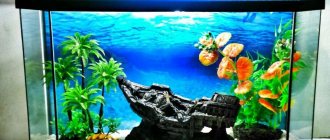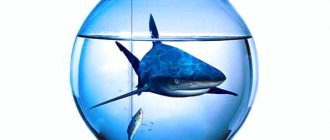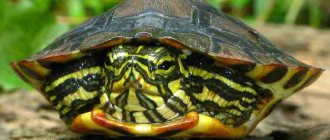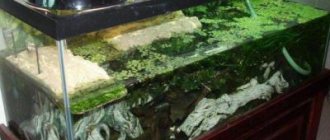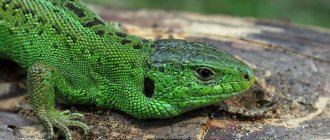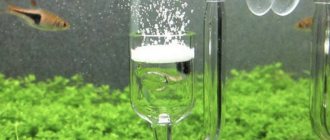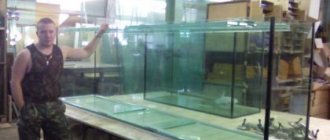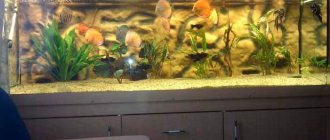Do-it-yourself terrarium: purpose, structure and features
A terrarium is a transparent structure that contains heat-loving chameleons, snakes, amphibians and even reptiles. Instructions on how to make a terrarium with your own hands: you should decide on the shape of the structure and dimensions, create the drawings yourself, and buy the necessary materials.
Details of the simplest terrarium: four walls that fit tightly one to the other, a bottom and a lid. The frame can be made of bamboo, metal or quality wood.
Basilisk: keeping at home
This reptile is the most popular to keep in the house. It should be borne in mind that individuals taken from the wild do not take root well in an unnatural environment for them. Therefore, for home breeding and keeping, it is better to take lizards bred in an incubator. Living in a terrarium, the reptile's color changed. It turned bluish. The lizard will be sad alone. Therefore, these reptiles are kept in pairs.
Nutrition should be balanced. The basis of the diet is vegetation. Lizards eat sprouted wheat, carrots, bananas, apples and other fruits well. But they also need other food: small rodents, lizards. Animals lay their eggs in a nest, the bottom of which is covered with sand and wet moss. The eggs are taken from the female and raised for 30 days in an incubator.
DIY terrariums for land turtles
For turtles, the terrarium is made with one main feature: one of the walls must be made of durable fine mesh, resistant to mechanical damage and moisture.
The red-eared turtle is a cute and unpretentious animal, caring for which does not take time or money. The temperature in the terrarium must be maintained within 22-28o C. For this, a heater with a built-in heating regulator is suitable. When the temperature drops to 20°, the small turtle begins to get sick and becomes lethargic.
A spacious biotope horizontal terrarium should be made for the turtle. It is necessary to place an artificial pond in the terrarium to maintain water balance in the amphibian’s body.
Diseases and their treatment
The inhabitants of the aquarium in question have a tendency to obesity. Therefore, you should feed them properly and give food for no longer than 5 minutes. One of the infectious diseases of acanthophthalmus is ichthyophthyriosis. A sign of the disease is small white tubercles on the body of the fish. If the disease is started, it is almost impossible to cure it and the loach may die. If there are 1-2 points, then it is quite possible to eliminate the disease by performing the following steps:
- The water temperature must be increased by 2-3 °C. Thanks to this manipulation, the life cycle of ichthyophthirius, which provokes the disease, is accelerated. They quickly find themselves outside and die. This water temperature also activates the immune system of the snake-like inhabitants.
- Then the Malachite Green solution is added to the aquarium. The product is used every day until the tubercles disappear. 6 days after using the drug, you need to replace 1/2 of the volume of water.
- The effect of malachite green can be enhanced by alcohol tincture of iodine (5%). The water temperature should not fall below +27-28 °C.
DIY chameleon terrarium
It is important for the iguana to create a warm climate, since it lives in tropical forests, where air humidity reaches 95%; the average temperature regime must be maintained within +25 or +28°C. You should consider the placement of ultraviolet lamps and the mode of their inclusion. The height of the first new house is 80-90 cm, width 30-40 cm, length - 50-60 centimeters.
When the pet reaches 1.5 years, its growth will stop, and it will be possible to think about creating a spacious home with an abundance of tiered structures: oak branches, which are distinguished by dense wood.
It is strictly forbidden to place iguanas near a TV, computer or microwave oven.
Creating conditions for the leopard gecko has a number of features. The terrarium should be made biotope, horizontal in shape. Semi-fixed sands are placed on the floor: a mixture of sand and clay. Ventilation plays an important role: it can be placed at the bottom of the box and securely draped with a fine, strong mesh to prevent the pet from going into the outside world. For one resident it will be enough to equip a living space of 40x40x40 with high quality. To accommodate a group, the volume of housing will need to be increased by 10-15 centimeters.
The temperature in the “house” is maintained within the range of 28-32°C; for this purpose, heating devices with regulation of the heat generated are chosen.
For the bearded dragon, it is necessary to recreate the conditions of the natural external environment. You should not uncontrollably release the reptile to walk around the apartment - the animal needs a warm climate and safety, otherwise the adaptation and life of the pet will be at risk.
When setting up optimal living conditions, you should be guided by the formula: 5X × 4X × 3X. These are the length, width and height, respectively. For example, you can create a container of 125×100×75 cm from plexiglass, wood and vertical racks with your own hands.
The terrarium is built from glass, plywood and chipboard. When placing wooden elements, you should first carry out treatment against pests: aphids and mites and bedbugs. Cover with moisture-resistant non-toxic varnish; acrylic varnish is a good choice.
Attention should be paid to maintaining heat within 28 ° C and moistening the enclosure. To create ventilation, holes are made in the lid and in the lower sections of the walls.
For the lizard, all the above requirements for the landscape and volume of the terrarium are relevant. You can place tiered “mountains” and small artificial ponds. Good lighting and warmth are the key to successfully keeping a reptile.
Every man will make a terrarium for the Cape monitor lizard with his own hands. It must be remembered that the reptile reaches impressive sizes. For this purpose, the floor of the enclosure and the walls are made of durable materials that are resistant to mechanical stress.
You can use thick glass, OSB panels, metal frames and profiles. It is important to consider that the enclosure will be successfully located in a niche in the wall and will occupy an area several meters wide.
Materials
Plexiglas is the most suitable material for a terrarium
The most suitable and affordable materials for creating terrariums are silicate and organic glass.
Advantages of plexiglass:
- It is more difficult to break than ordinary silicate;
- Containers made of plexiglass accumulate heat well and reluctantly release it into the surrounding space;
- Its fragments rarely form sharp edges on which you can cut yourself;
- Plexiglas is easier to process and fasten.
Plexiglas has fewer disadvantages than advantages, but each of them can become critical for a terrarium.
- Plexiglass is easy to scratch. Therefore, you can only wash it with a soft sponge or gauze;
- The surface of the plexiglass becomes cloudy over time and begins to turn yellow;
- Ultraviolet rays are harmful to plexiglass.
Thus, plexiglass is a good material for terrariums whose inhabitants cannot scratch the walls. These could be spiders, snakes, Achatina. To make terrariums in which animals with sharp claws (lizards or turtles) will live, you should choose a different material.
In addition to the plexiglass itself, you will need plastic corners and a metal mesh for ventilation. To make doors, you need two types of plastic E profiles. The upper profile should be 2 times deeper than the lower one. The size of both profiles corresponds to the thickness of the door material.
Choice of plexiglass
In order to choose the right plexiglass for a terrarium, you need to know that it comes in two types - cast and extruded. Casting is more expensive, but does not have most of the above disadvantages. It is stronger than extrusion and less cloudy. Some brands transmit UV rays well and are not destroyed under their influence. Therefore, it is worth choosing those brands of molded plexiglass that are characterized by strength, preservation of transparency and do not block UV rays. The sheet thickness should not be less than 5 mm.
Glue selection
The glue must meet two characteristics:
- Be harmless to living organisms, do not release chemicals upon contact with litter, water or excrement;
- Be durable and waterproof.
In practice, any silicone sealant for gluing terrariums or aquariums meets these conditions.
When working with such sealants, you must be careful, since drops frozen on the material are difficult to clean off.
DIY snake terrarium
Such housing is created taking into account the characteristics of the species and habits of amphibians. The maximum size of adults and their strength should be taken into account.
Holes for ventilation are placed on the side walls, tightly covering them with a mesh. For a boa constrictor, chipboard and glass are the optimal materials. A drawing is created that takes into account measures to strengthen the side walls and bottom. After the required dimensions are cut out, all the cracks are puttied, and a layer of resin and enamel is applied to them; heating and decor are placed on the floor.
You need to choose smooth pebbles and branches of oak, maple or apple tree for your landscape. A horizontal terrarium should be built for the snake, since this snake actively climbs upward all the time. The minimum dimensions for one individual are 50x40x40 centimeters. The temperature should be maintained between 23 and 25 at night and 30-32°C during the day.
Shelters can be of different shapes; you need to place an artificial pond to maintain water balance in the snake’s body. In captivity they are fed laboratory
mice and other types of rodents. Drinking water is changed regularly. The same requirements apply to creating enclosures for snakes and royal pythons.
Feeding
As noted above, in comparison with other aquarium fish, kalamoichts have an excellent sense of smell. They love live foods rich in protein, such as bloodworms, small or earthworms, pieces of shrimp, fish fillets, squid, brine shrimp, pieces of raw fish, pieces of frozen food. But Kalamohites are quite slow. While you feed the fish, due to his eyesight and habit of hiding, he will be the last to find food. It is advisable to feed him either at night, during the period of their activity, you can throw food in front of him or feed him a little later separately (after 10-15 minutes), when he feels that there is food. A young individual needs to be fed 5–6 times a day, and an adult 2–3 times.
DIY spider terrarium
You can glue together a cozy home for a tarantula spider at home, for this you need:
- glass three millimeters wide;
- grindstone;
- silicone glue;
- starting strip for lining, transparent (width - no more than 4 mm);
- self-adhesive magnetic tape;
- stainless steel mesh;
- stones, branches and decorative houses.
First, cut out the desired shape, thoroughly wash the glass, and wipe it with dry cloths.
Next, we smear the bottom (main) piece of glass with glue in the shape of the letter P. We smear the side windows with glue, and assemble the cubic structure. Don't forget to hold the glass for a few seconds until the glue sets.
We install all the walls and fasten the top one.
While everything is drying, take the front lower side and glue it to the main structure.
Purchasing an iguana
You can buy an iguana at a pet store or order it online, which is not difficult these days. However, when buying a pet, you should approach the issue of choice correctly, we will talk about this further.
What type of iguana should you choose as a pet?
If you want to purchase an exotic pet, you can choose one of the following types:
- the green iguana has a long green body, individuals are classic inhabitants of pet stores;
- the Madagascar variety has a pleasant gray color with yellow spots;
- The collared iguana has the brightest coloring among all varieties, which is what attracts buyers when choosing an animal.
The presented individuals easily adapt to living at home, and also have a beautiful appearance and unpretentious character.
What to look for when buying an iguana?
An important criterion when choosing a pet is its health, so you should learn to correctly distinguish healthy from sick individuals. In order for an iguana to live a long time and delight you with its presence, you should buy a healthy individual and properly care for it.
First of all, when purchasing, you need to examine the pet and evaluate the following signs:
- The skin should not have wounds or scratches, it should be clean and free of dirt. The body should not show bruises, injuries, or contusions.
- The abdominal area should not be covered in sand or feces.
- The anus is normally dry and clean, without bowel movements.
- The animal can walk on all legs, all limbs are the same size without changes.
- There should be no mucus coming out of your nose.
- The eyes should be clean and clear, without any cloudiness or dirt.
- The general condition of the iguana is normally active, it constantly moves, and has a good appetite.
- The oral cavity is normally pink in color.
Do-it-yourself terrarium for Achatina snails
The best house for the Achatina snail is easy to make. To do this, you need to buy glass, cut and glue a box of 4 walls, make a bottom and a lid. The top can be covered with veneer. The floor is made from chipboard. Place heating, holes for air and water. Curious snails taste everything and multiply quickly.
For caterpillars, housing is created according to the same principle; the distinctive feature is lighting and the presence of living plants on which the caterpillar will feed. For ants, terrariums should be built with maximum treatment with resin and putty on all cracks and holes for moisture and ventilation.
For the praying mantis, the construction concept is the same. The owner can put a pot with a live flower and place pebbles and a container of water at the bottom.
Gluing glass blanks
Silicone sealant is best suited for gluing structural parts. It will not harm either fish or plants, unlike acrylic, butyl, acid, and bitumen adhesives. To glue the workpieces together, it is necessary to apply silicone sealant in drops along the perimeter of the bottom, leaving beacons for subsequent filling. Next, you need to wait about two hours and cut off the hardened sealant so that a layer up to two millimeters thick remains.
Now you can attach and glue the front wall, then attach and seal the end blanks and the back wall. Excess silicone should be removed with a sponge or damp cloth, or most conveniently with the sharp corner of a plastic spatula.
To ensure a safety margin, it is recommended to apply an additional layer of sealant to the joints after two hours. The product must stand for an hour, then the masking tape is removed. The seams of the aquarium are cleaned with a utility blade.
How to make a dollhouse with your own hands - a detailed description of the process, photo examples, tips
DIY potato crafts for kindergarten and school - photo ideas, master classes, tips
Making terrariums for a hamster with your own hands
As a general rule, the arrangement of a habitat for rodents occurs in accordance with the listed criteria. Volume and width 40×50, maybe less, it all depends on the number of representatives of a given species. Particular attention should be paid to the technique of cleaning waste products and eliminating odors.
For rats, it is important to place toys for active recreation: carousels and swings, many passages and places where they can chew something.
It is worth installing drinking bowls and holes for the hamster in which he will store provisions. These animals are distinguished by laziness and good appetite.
For mice, warmth, ventilation and active pastime are important components of health. Interesting houses and tiered structures will decorate the life of rodents.
Literature
- Gurzhiy A. N.
Your terrarium. - M.: Aquarium-Print LLC, 2006. - Kochetov S. M.
Aquaterrarium. - M.: Veche, 2004. - Ognev A.V.
Snakes in a home terrarium. - M.: AQUARIUM LTD, 2001. - Henkel F.-W., Schmidt
W.
Terrarium. Device, design, equipment. /Transl. with him. E. Boldyreva
. - M.: AQUARIUM LTD, 2001. - Schmitz
Z.
Your terrarium. Keeping turtles, lizards, newts, insects at home. /Trans. with him. E. Mukhina
. - M.: Aquarium, 1998. - How to care for aquarium fish and reptiles /Auth.-comp. V. T. Demyanchik
. - Mn.: Literature, 1998. - Reptiles in the aquarium /Auth.-comp. A. V. Stepura. - M.: AST Publishing House LLC, 2002.
How to make a terrarium from a light bulb?
Making a terrarium from a light bulb is a fun process. The incandescent lamp is disassembled, completely removing internal objects. Using a paper tube, the glass space is filled with small pebbles, tree bark and moss. Poly is carried out using a syringe.
From an aquarium, a glass product will be made in a matter of minutes. A frame is created from an aluminum profile. In the forest there are a huge number of decorative elements made of wood, pebbles and small plants.
The answer to the question: “What can decor be made from?” - all the abundance of natural elements that the environment is full of.
We collect everything you need
What materials will be needed to create a terrarium?
- gravel
- fertile soil, soil
- charcoal
- pebbles
- moss
- plants
- decorations (stones, figurines, other interesting elements)
It is worth dwelling on plants in more detail. Since we are considering "mini" terrariums, the plants should not be tall. Another important point is unpretentiousness.
For a closed terrarium, moisture-loving plants are suitable; the best choice would be various types of moss and ferns. Plants of the bromeliad family from tropical forests will also like the conditions. Saltirolia, called baby's tears, is another option.
For an open terrarium the variability increases. Succulents and cacti are the leaders in size and variety of appearance, especially since they are unpretentious. Some types of plants absorb moisture from the air and do not require watering - only spraying. For a terrarium this will be the most convenient option.
Which glass is better
Choose glass of M1 quality class. The window type of material is not suitable because it is fragile, poorly polished and creates a distorted effect. The ideal option would be display glass. It is durable, can withstand increased loads and is applicable for the manufacture of volumetric structures. Also, you will not face the problem of cloudy appearance and visual distortion.
You should not buy already used canvases, and to ensure uniform redistribution of load pressure, consider installing stiffeners.
The best fastening will be ensured if the edges are left unsanded.
